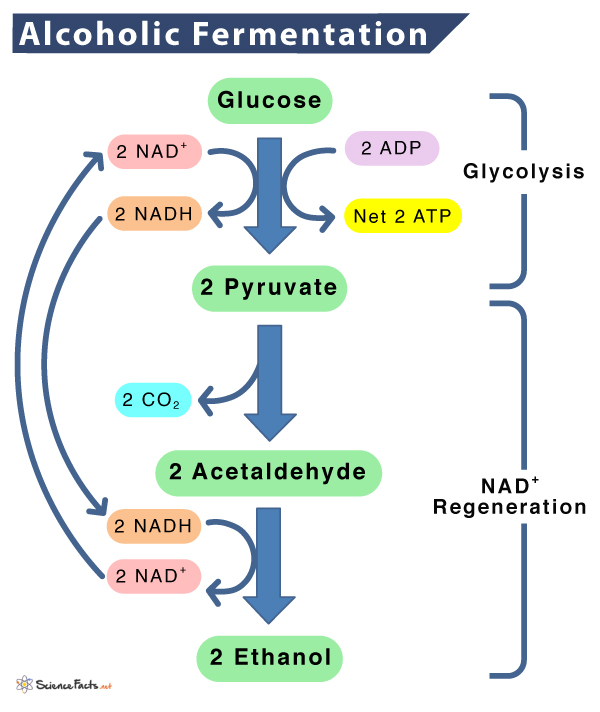In yeasts, this is an alternative respiratory pathway performed without oxygen. When oxygen is available, they immediately shift to the aerobic path. It is widely used in producing alcoholic beverages such as beer and wine. Where does Alcoholic Fermentation Occur Like all fermentations, alcoholic fermentation also occurs in the cytosol of yeasts such as Saccharomyces cerevisiae and some bacteria.
Process of Alcoholic Fermentation
Uses of Alcoholic Fermentation
Equation: C6H12O6 -> 2 C2H5OH (ethanol) + CO2 The entire process has two main steps:
Step 1: Glycolysis
Here, one glucose molecule forms two molecules of pyruvic acids or pyruvate. The electron acceptor NAD+ is reduced to form NADH, generating 2 ATP molecules per cycle. Thus, this part is similar to the first stage of aerobic respiration. Glucose + 2 ATP + 2NAD+ -> 2 Pyruvic acid + 2 NADH + 2 ATP Under anaerobic conditions, the pyruvate produced stays in the cytosol in contrast to aerobic respiration. At this stage, the next step of alcoholic fermentation starts.
Step 2: Conversion of Pyruvate to Ethanol
Pyruvate is first converted to acetaldehyde, an intermediary compound, by the enzyme pyruvate decarboxylase releasing carbon dioxide. 2 Pyruvic acid -> 2 CH3CHO (acetaldehyde) + 2 CO2 The acetaldehyde is then converted to ethanol, which along with carbon dioxide, are by-products. During this step, NADH is oxidized to NAD+, bypassing its electrons to acetaldehyde in the presence of the alcohol dehydrogenase enzyme. 2 CH3CHO + NADH -> 2 C2H5OH (ethanol) + NAD+ This step does not create any further ATP for the yeast but helps to regenerate NAD+, which helps to continue glycolysis. Also, lactic acid fermentation helps yeast such as Saccharomyces carry out respiration without oxygen. Thus, it is a rescue pathway in yeasts without the presence of oxygen. Alcoholic fermentation has high commercial value. It is used to produce commercial products such as wine, brandy, beer, whiskey, and rum, among others. This type of fermentation is also used as a feedstock for fuel production, such as sugarcane and corn.
